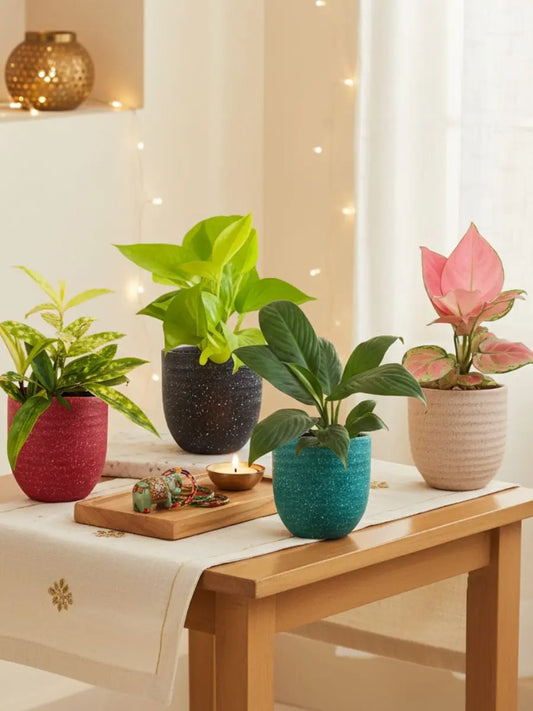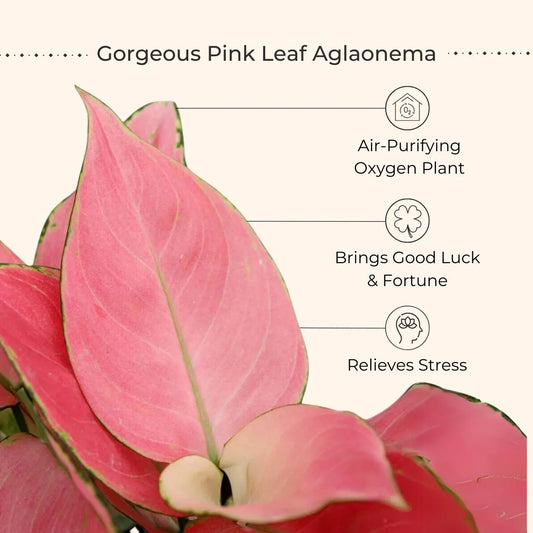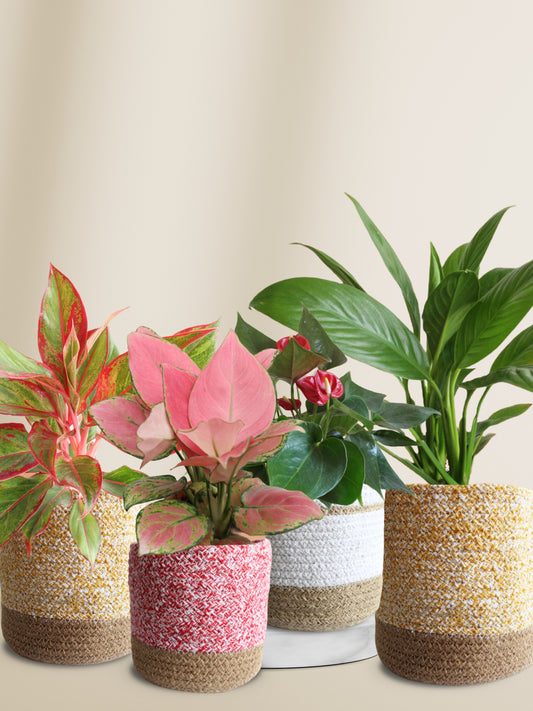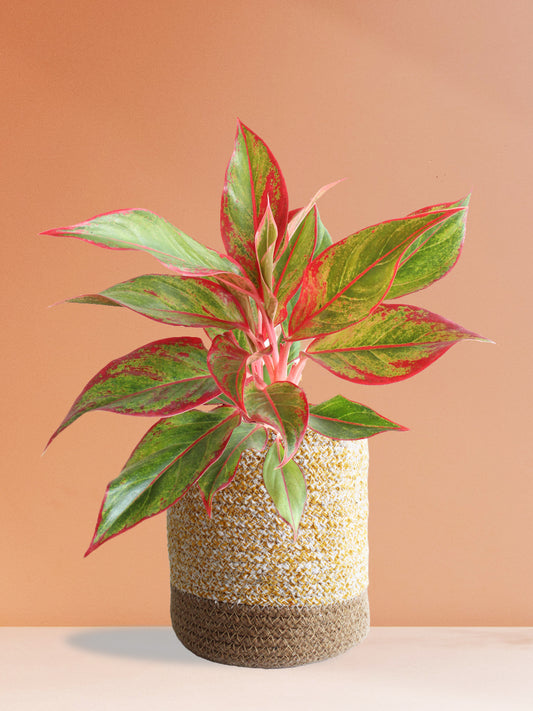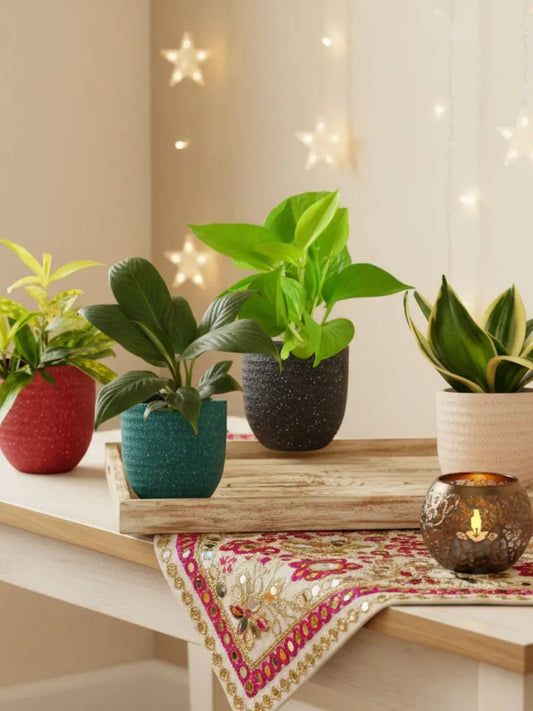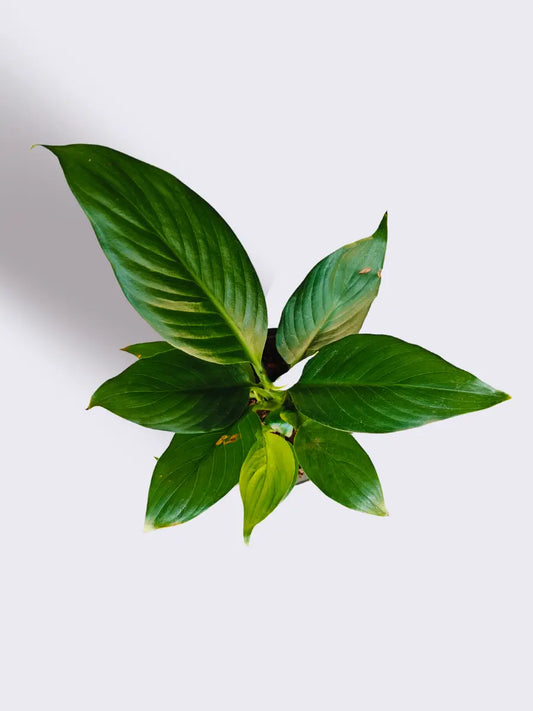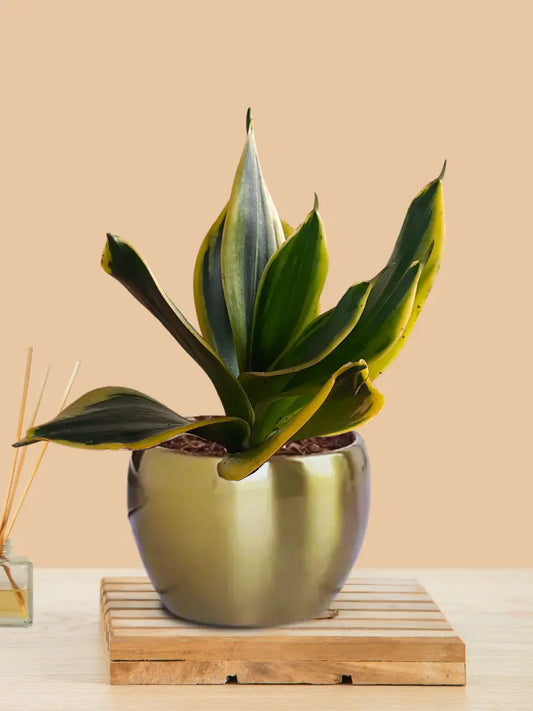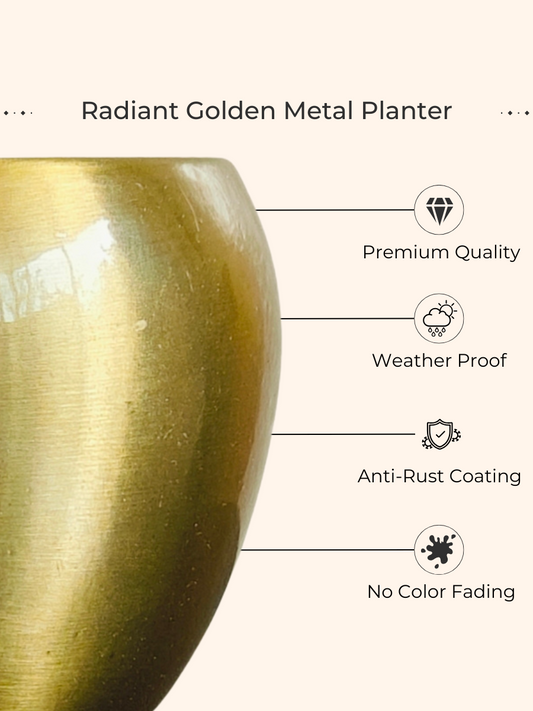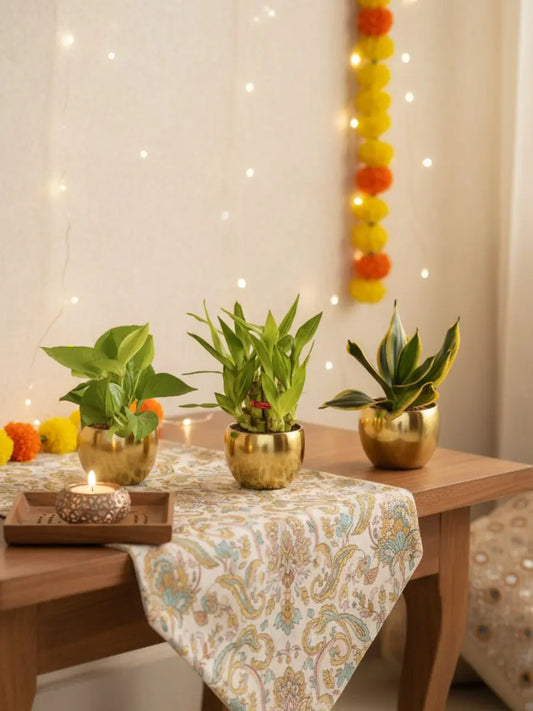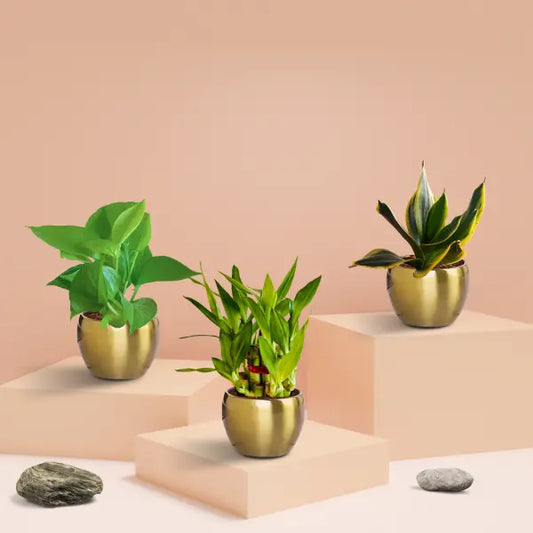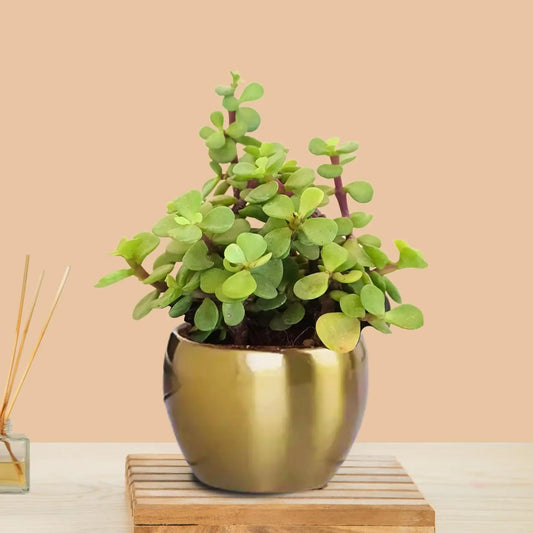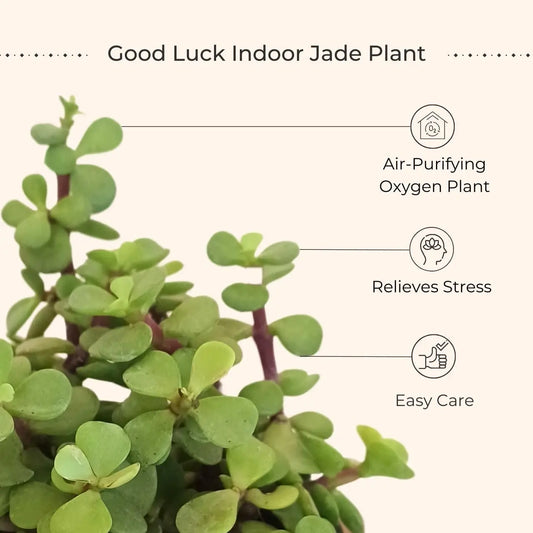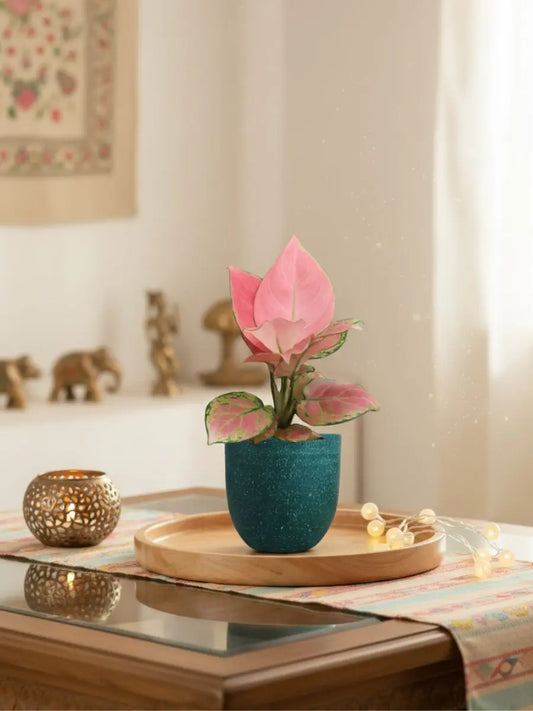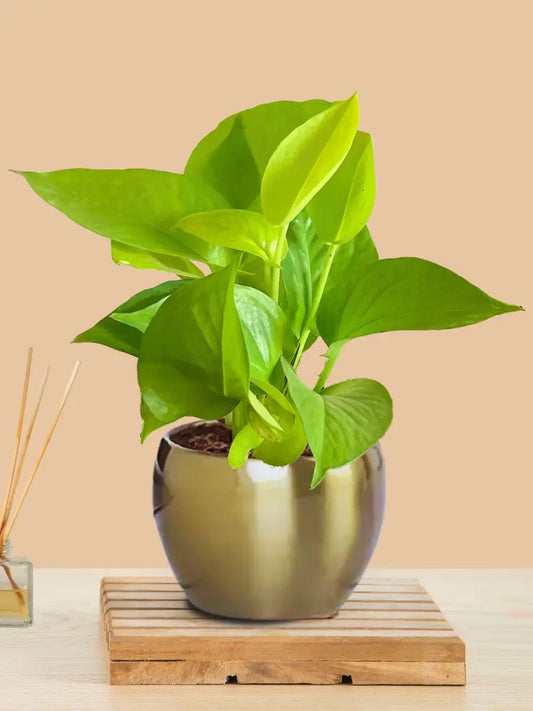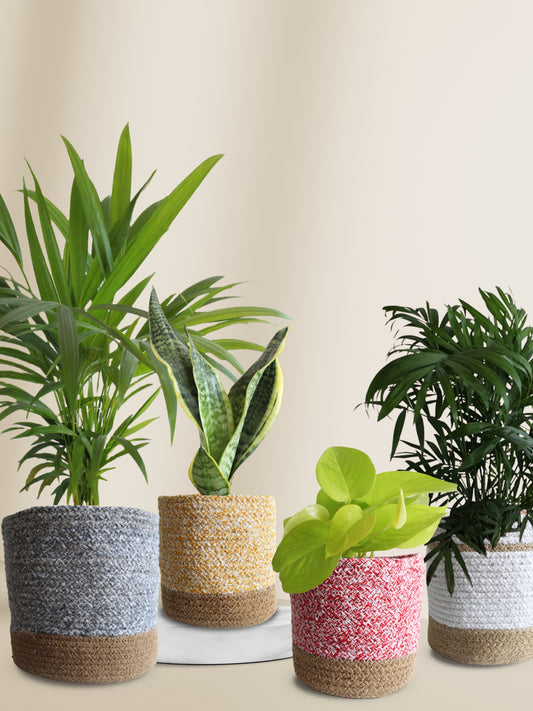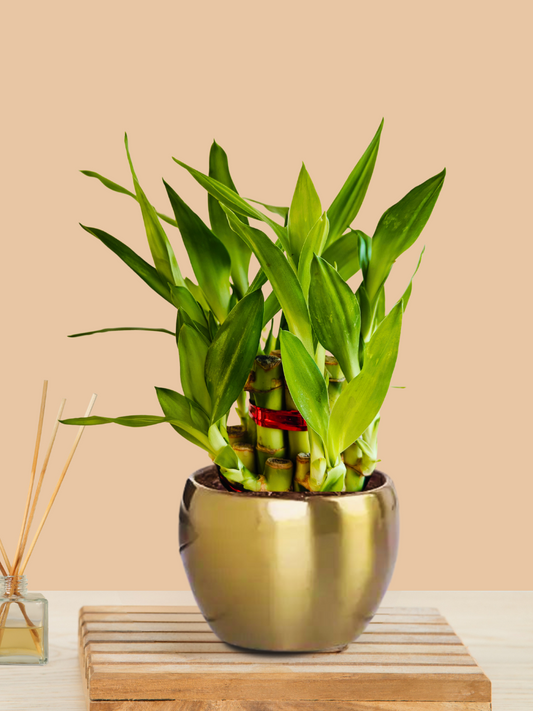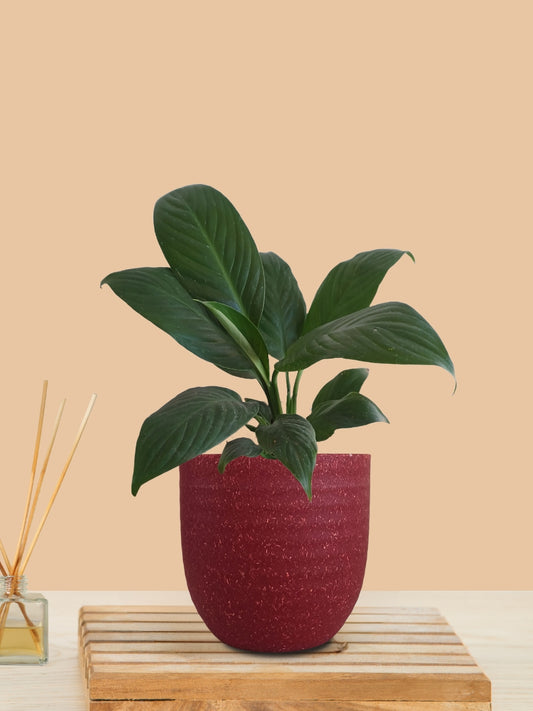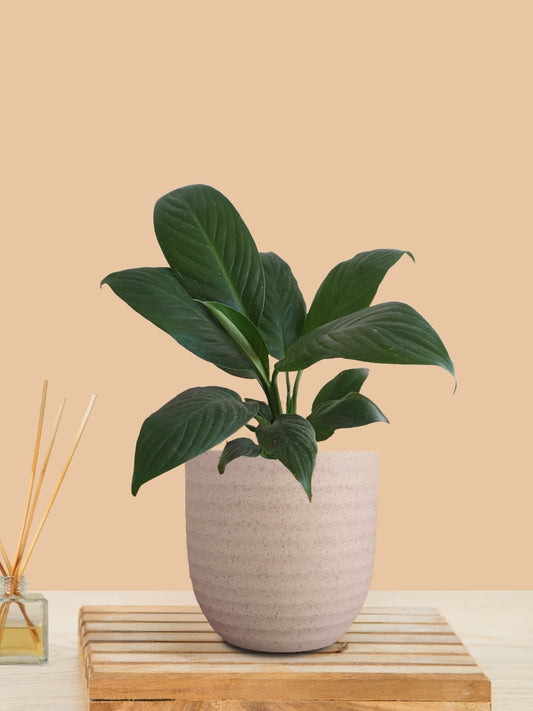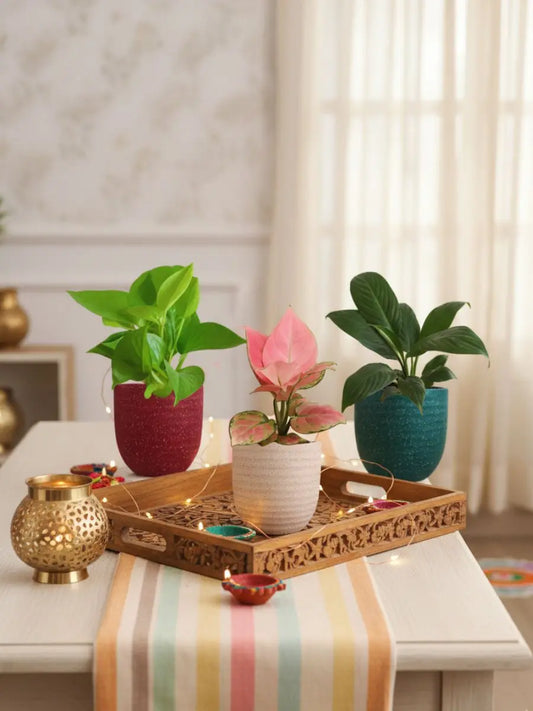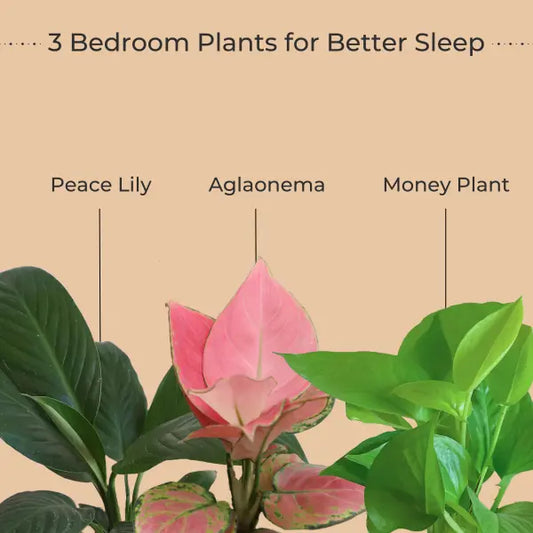
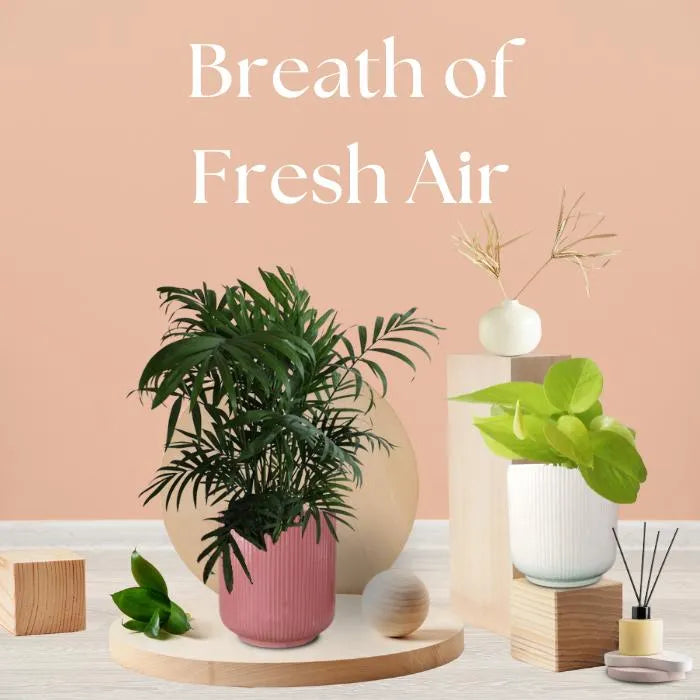
-
Easy Care Air Purifying Indoor Plants Combo (Small)
Regular price ₹ 1,249Regular priceUnit price per₹ 2,249Sale price ₹ 1,249Sale -
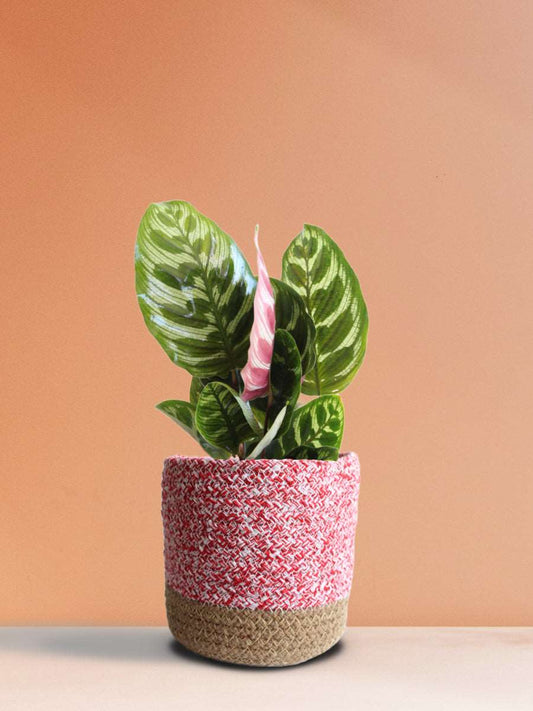
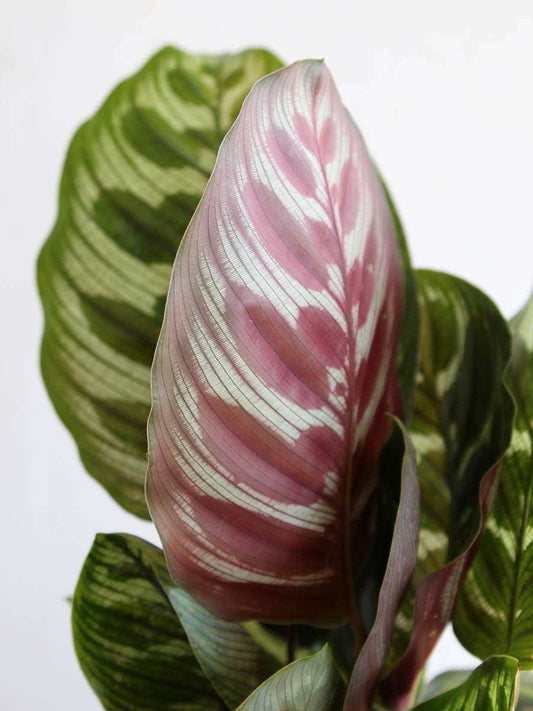 48% Off
48% OffCalathea Peacock (Medium)
Regular price From ₹ 699Regular priceUnit price per₹ 1,349Sale price From ₹ 699Sale -
Air Purifying Plants Combo in Metal Pots (Small)
Regular price ₹ 999Regular priceUnit price per₹ 2,399Sale price ₹ 999Sale -
Colorful Air-Purifying Plants Combo for Bedroom
Regular price ₹ 4,724Regular priceUnit price per₹ 6,299Sale price ₹ 4,724Sale -
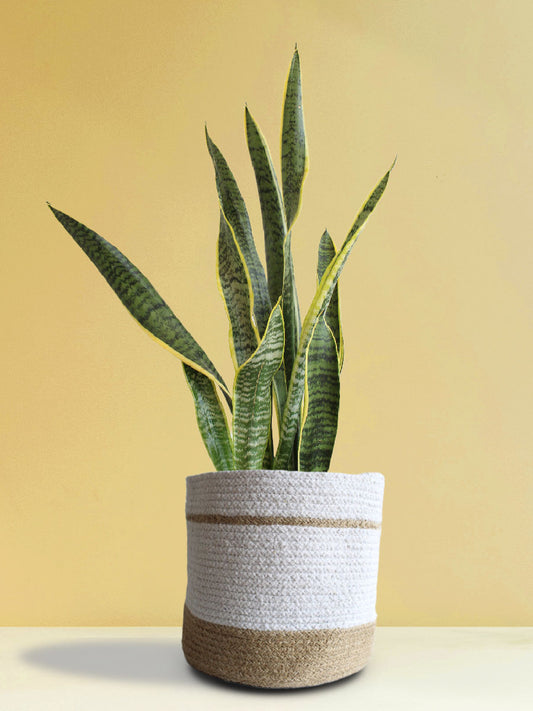
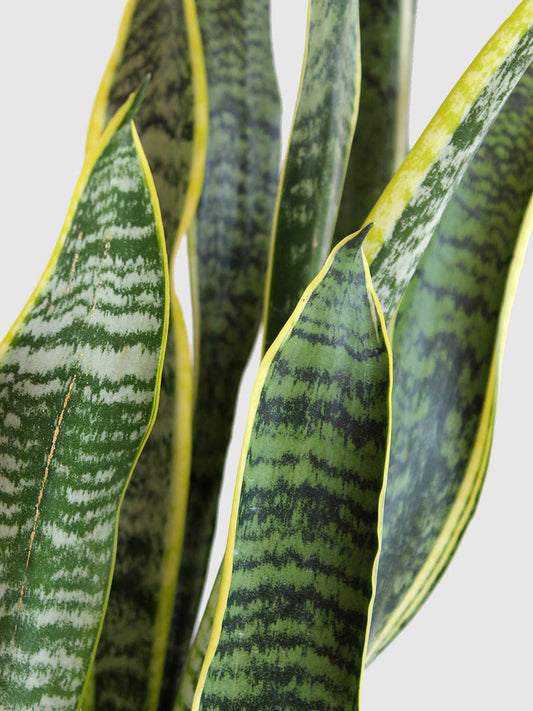 20% Off
20% OffSnake Plant Laurentii (X-Large)
Regular price From ₹ 1,999Regular priceUnit price per₹ 2,499Sale price From ₹ 1,999Sale -
Air Purifying Plants Combo for Home in Eco Pots (Small)
Regular price ₹ 1,249Regular priceUnit price per₹ 2,299Sale price ₹ 1,249Sale -
Lotus Golden Snake Plant (Small) in Golden Metal Pot
Regular price ₹ 349Regular priceUnit price per₹ 649Sale price ₹ 349Sale -
Vastu Plants Combo in Metal Pots (Small)
Regular price ₹ 999Regular priceUnit price per₹ 2,049Sale price ₹ 999Sale -
Jade Plant (Small) in Golden Metal Pot
Regular price ₹ 299Regular priceUnit price per₹ 549Sale price ₹ 299Sale -
Aglaonema Pink Anjamani (Small) in Eco Pot
Regular price ₹ 559Regular priceUnit price per₹ 699Sale price ₹ 559Sale -
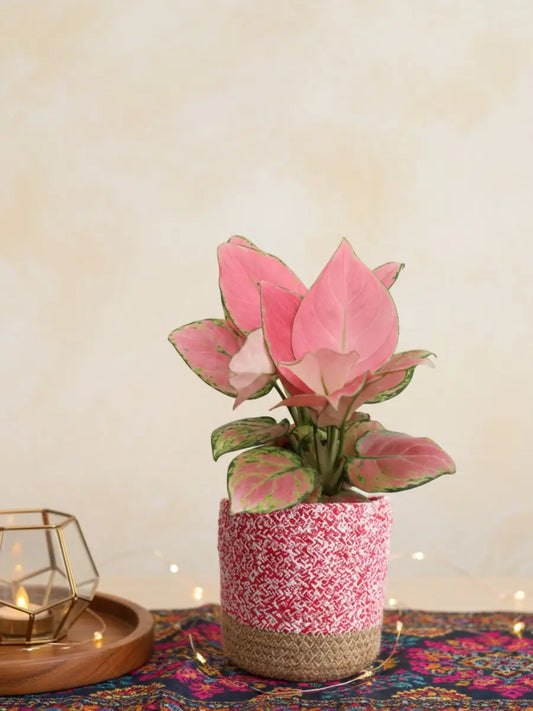
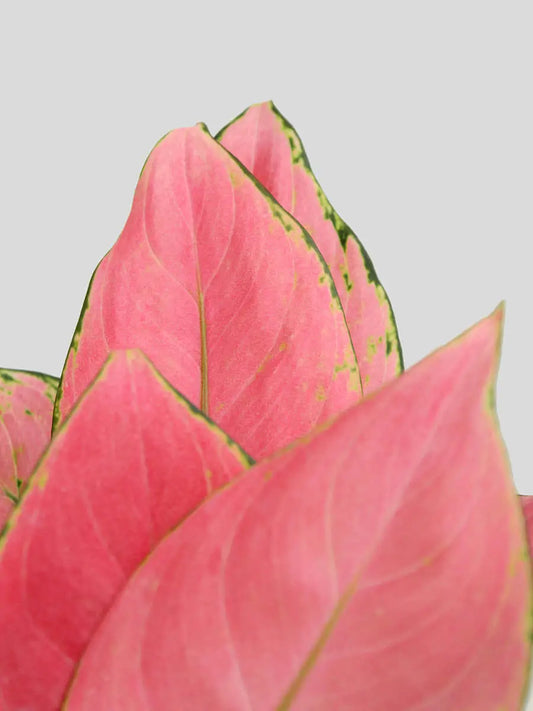 26% Off
26% OffAglaonema Pink Anjamani (Medium)
Regular price From ₹ 699Regular priceUnit price per₹ 949Sale price From ₹ 699Sale -
Money Plant Golden (Small) in Golden Metal Pot
Regular price ₹ 299Regular priceUnit price per₹ 599Sale price ₹ 299Sale -
Easy-Care Air-Purifying Plants Combo
Regular price ₹ 5,286Regular priceUnit price per₹ 7,049Sale price ₹ 5,286Sale -
Lucky Bamboo 2 Layer Plant (Small) in Golden Metal Pot
Regular price ₹ 399Regular priceUnit price per₹ 799Sale price ₹ 399Sale -
Peace Lily Green (Small) in Eco Pot
Regular price ₹ 349Regular priceUnit price per₹ 499Sale price ₹ 349Sale -
Bedroom Plants Combo for Better Sleep (Small)
Regular price ₹ 999Regular priceUnit price per₹ 1,699Sale price ₹ 999Sale
Let customers speak for us
Buy Air Purifying Plants Online
Indian urban cities have seen an increase in pollution levels over the last decade, and the air quality index (AQI) has deteriorated to harmful levels. Did you know that air-purifying plants can help you to combat these pollutants at least within your homes? Read our FAQs below to understand which toxins are present in indoor spaces, and what are their harmful effects on our health. Also, learn about the best plants for air quality that can be used to combat these toxins.
Remember that different plants reduce different toxins by different amounts. So it is best to mix and match certain plants so that your home gets all the harmful toxins reduced. You can also look for one of our air-purifying plants for fresh air bundles to get a complete package designed for your home's air purification.
Why Choose Air Purifying Plants?
Being surrounded by plants enhances our health and happiness, which is not surprising considering that life on Earth would be impossible without them. Nowadays, indoor air quality is a major issue. Consequently, air-purifying plants for homes and workplaces are a popular natural remedy. These natural air purifiers offer a simple yet effective solution to improve the air we breathe indoors.
Moreover, air-purifying plants are plants that are extra effective at removing pollutants and toxic chemicals from the air, making it safe and oxygenated. These plants that reduce pollution come from a variety of species, all with their own unique set of characteristics and adaptations. They vary in their appearance, size, and growth patterns, giving you a wide selection to choose from.
Furthermore, air purifying plant has versatility for every space. Greenkin air purifying houseplants are available in different shapes and sizes for different settings such as:
- Bedroom air purifying plants can help to wake up more refreshed and be able to have a more productive day.
- Air purifying plants for offices help increase productivity when it comes to work.
- Small space air purifying plants are the best options one may have for their little apartments or compact settings.
- Large air-purifying plants make dramatic statements by cleaning the air in spacious rooms.
- Adjust care routines of air purifying houseplants based on individual plant species and environmental conditions.
- Place indoor air-purifying plants in bright, indirect sunlight for ideal growth.
- Water the easy care air purifying plants moderately to prevent root rot.
- Mist the foliage of air-purifying indoor plants regularly with clean water to maintain humidity and deter pests.
- Regularly inspect for pests of air-purifying indoor plants, particularly under leaves and around pots, and address any issues promptly with eco-friendly solutions.
- Prune wilted or damaged leaves of air purifying houseplants to encourage growth and reduce disease risk.
- Clean the air purifying houseplants’ leaves with a damp cloth to enhance their air-filtering ability and appearance.
- For healthy indoor air-purifying plants, use organic fertilizers throughout the growth season.
Benefits of keeping air-purifying plants at home:
There are multiple health benefits of keeping plants at your home, and even more when you opt for air-purifying plants. There are many physical and mental health benefits that come with air-purifying plants, let us explore some of them right here:
Health benefits of air-purifying plants:
Air purifying plants help in reduction of VOCs (Volatile Organic Compounds) that cause a range of health issues. Short-term effects of VOCs like Benzene, Formaldehyde, Xylene, Toluene, Acetone, and other chemicals that are added into the air by everyday products, include headache, dizziness, eye irritation, increase in asthma symptoms, and respiratory tract irritation. Long-term effects for chronic exposure to these substances can lead to damage of central nervous system, liver and kidney damage, and cancer.
Apart from VOCs, Air purifying plants help in reducing Carbon Monoxide levels at home, which is a growing concern in Indian urban cities. Carbon monoxide is harmful in a slightly tricky way - it displaces Oxygen in your breathing, and at a certain level, makes Oxygen levels so low that you start experiencing headaches and giddiness
Also, a major factor is that air-purifying plants absorb pollutants by reducing particulate matter and dust particles in the air. Dust particles are very common in India, and are a major cause for skin irritation and eye irritation. Plants trap these dust particles, and reduce common symptoms like rashes, itching, and dry eyes.
Vastu benefits of air purifying plants at home
While air purifying plants provide a lot of physical health benefits, they also are great for mental well-being. Plants help in reducing the feelings of anxiety and depression. They help in boosting morale, and add calmness to the indoor space. In an article published at BioMed Central, plants have been observed to reduce stress by suppression of sympathetic nervous system activity and diastolic blood pressure and promotion of comfortable, soothed, and natural feelings.
What types of toxins and pollutants are purified by air purifying plants?
Houseplants purify indoor air from various pollutants and irritants. Let us explore them below:
Volatile Organic Compounds (VOCs) are commonly found compounds like acetone, formaldehyde, benzene, toluene, xylene, and other chemicals that are emitted from various household sources like nail polish remover, room freshener sprays, paints, glues and adhesives, cleaners and disinfectants, varnish and wax from furniture, and other daily use products. VOCs affect health both in the short-term as well as in the long-term.
People have experienced eye and respiratory tract irritation, headaches, visual disorders, worsening of asthma symptoms, dizziness and memory impairment soon after exposure to VOCs. In the longer run, VOCs exposure can lead to kidney and liver damage, damage to the central nervous system and prolonged chronic exposure can lead to cancer. House plants are excellent at removing these VOCs from indoor air. The best air purifying plants to remove VOCs from indoor air are Money Plant (Pothos), Philodendrons, Snake Plant, Dracaena, Peace Lily, Bromeliads, Areca palm, Spider Plant, Rubber Plant, and Jade Plant.
Apart from VOCs, ideal fresh air plants for indoors like Golden Pothos, Spider Plant, and Peace Lily remove Carbon monoxide from the air. Carbon monoxide is released in the air by water heaters, ovens, and gas stoves. A higher concentration of Carbon monoxide causes headaches and dizziness.
Another great benefit of air-purifying plants is their ability to remove dust particles that cause eye and skin irritation. Air purifying plants like Money Plant, English Ivy, Peace Lily, Philodendrons, and Spider Plant trap dust particles and reduce their concentration in the indoor air.
Some air purifying indoor plants like English Ivy, Rubber Plant, Snake Plant, and Peace Lily also help in removing mold spores and bacteria from the indoor air. Mold spores cause allergic symptoms like skin rashes, sneezing, red eyes, and respiratory tract irritation.
The Best Indoor Air Purifying Plants
Are you looking for the best indoor air purification plants for air quality in your home and office? While there are hundreds of plants that help you cleanse your home's environment, here are the plants which top the air purifying plants list:
1. Money Plant: The first top indoor air purifying plant on our top list is Pothos, the evergreen hardy plant that comes in many varieties. Pothos is great at reducing Carbon monoxide and VOCs like Formaldehyde, Trichloroethylene, Benzene, Toluene and Xylene. Pothos is also a great plant for reducing dust particles in the air which cause skin and eye irritation.
2. English Ivy: From the list of air purifying plants analysed by NASA comes Hedera Helix, commonly known as English Ivy. Amoxng the best air plants for indoors, this plant is excellent at absorbing harmful VOCs (Volatile Organic Compounds) like Formaldehyde, Xylene, Toluene, and Benzene.
3. Philodendron Heart Leaf: Another popular indoor air-purifying plant that is a climber, similar to Money Plant and English Ivy, is Philodendron Oxycardium (commonly called Heart Leaf). It is effective plants that reduce pollution by removing Formaldehyde, which is added into the air by various sources like wood based furniture, building materials, gas stoves, smoking, and various household products, and causes irritation to eyes, nose, throat and lungs.
4. Spider Plant: These gorgeous pet-safe air purifying plants remove up to 95% of toxins in the indoor air within 24 hours. Spider Plants are great at removing Carbon monoxide, Benzene, Styrene, Xylene, Toluene and Formaldehyde. They are hardy plants and grow well in medium light conditions. They can remove up to 78% mold spores from the air within 12 hours. Place them in a macrame plant hanger, and you have the perfect looking air purifying plant at your home.
5. Peace Lily: Peace Lily plants, which are among the best houseplants for clean air and also provide aesthetic value to a space, are well-known for their stunning white blossoms. They are extremely easy to grow and care for, weekly watering and low to medium light is all that the plant needs. It is good at absorbing Carbon monoxide and VOCs like Benzene, Formaldehyde, Xylene and Trichloroethylene. Additionally, by eliminating Acetone from the air, these plants remove toxins.
6. Snake Plant: Snake Plant is one of the most hardy and effective low-light air purifying plants for homes. Its name comes from the fact that it repels snakes since snakes do not like to go near them because of their upward sharp leaves appearance. Their appearance also gives them another common name, Mother-in-law's tongue. They are good at removing VOCs like Benzene, Xylene, Trichloroethylene and Formaldehyde. Since snake plants emit oxygen at night, they function as a 24-hour indoor plant oxygen generator, making them an ideal houseplant for improved sleep quality.
7. Areca Palm: Palms are a great way to décor your room's corners. All palms are safe for children and dogs since they are non-toxic air purifying plants that produce no hazardous chemicals and effectively remove harmful VOCs. These large air purifying plants can grow up to 6 to 8 feet tall in pots, and add a vibrant tropical vibe to one's home.
8. Rubber Plant: There are 3 main types of indoor Rubber Plants that are found in India - Golden Rubber Plant, Variegated Rubber Plant and Burgundy Rubber Plant. Rubber plants grow tall and are best placed at Corners. When potted indoors, they need medium to bright indirect light. Some amount of morning sun helps them grow faster. Rubber Plants are fantastic Oxygen generators, and help in removing Formaldehyde from indoor air. Another major air purifying ability exhibited by Rubber Plant is removal of Mold Spores and Bacteria from indoor air.
9. Aloe Vera: Known for its medicinal properties, Aloe Vera is good for healing burns and skin allergies like rashes. Aloe Vera is also a good plant that clean air by filtering Carbon monoxide, Benzene and Formaldehyde. They can be grown in bright light and sunny spots.
10. Jade Plant: Jade Plants are ideal air purifying plants with low maintenance needs. Moreover, this plant is good at removing Acetone and Toluene from indoor air. They are one of the few efficient clean air plants that absorb Carbon dioxide during both the day as well as the night. They are also great at increasing humidity within the room, which helps in the same way that air humidifiers do.
What are NASA recommended air purifying plants?
Nasa studied the process of Phytoremediation or Biofiltration, and back in 1989, they published a study titled "Interior Landscape Plants for Indoor Air Pollution Abatement", where they measured the effectiveness of certain air purifying plants against 3 common VOCs - Benzene, Trichloroethylene, and Formaldehyde.
The full study report can be found here. In India, you can find many types of Pothos (Money Plant), Snake Plant (Mother-in-law's Tongue), Peace Lily, Dracaena and English Ivy.
Do I really need air purifying plants for my home?
Urban homes are very susceptible to pollutants and irritants like VOCs and other harmful chemicals. Most of our daily activities include usage of products that release these VOCs into the air. For instance, gas stoves and water heaters emit Carbon monoxide. Nail polish removers release Acetone. Air fresheners and cleaners & disinfectants release harmful VOCs like Formaldehyde and Benzene. Studies have found that levels of several VOCs average 2 to 5 times higher indoors than outdoors. Moreover, levels may be 1,000 times higher than background outdoor levels post certain activities, such as painting and furniture polishing.
So yes, every urban household needs more air purifying plants to keep their home's environment cleaner and healthier. Apart from removing the above mentioned VOCs, natural air purifier plants also reduce dust particles in the air. Indian cities are constantly under development and nearby constructions create a huge amount of particulate matter that causes eye irritation and headache. Thankfully, air purifying plants with dense foliage can keep the overall particulate matter quantity in check within your home.
How to Care for Your Air Purifying Plants
Air-purifying indoor plants are relatively low-maintenance, but proper care is essential to maximize their effectiveness in purifying the environment. While these plants don't require specialized attention, following a few key practices will ensure they thrive and continue to purify your indoor air efficiently. To keep these natural air purifier plants healthy and functional, follow these guidelines:
FAQ
Plants that remove VOCs from air, are called air purifying plants. The common ones are Money Plant (Pothos), Philodendrons, Snake Plant, Dracaena, Peace Lily, Bromeliads, Areca palm, Spider Plant, Rubber Plant, and Jade Plant.
Air purifying plants are used to to produce more oxygen indoors. Some air purifying plants also contribute in removing chemicals like formaldehyde and benzene.
Air purifying Plants are commonly easy to maintain and make homes healthier by improving air quality and so are popular. Air purifying plants are generally planted to improve indoor air quality.
Air purifying plants might not be a substitute for air purifiers. But keeping in air purifying plants improves air quality substantially.
Yes, plants like Money Plant (Pothos), Philodendrons, Snake Plant, Dracaena, Peace Lily, Bromeliads, Areca palm, Spider Plant, Rubber Plant, and Jade Plant are indoor air purifying plants. They are easy to grow and maintain.
Some Air Purifying plants might not be safe for pets.If ingested these plants can be toxic.
Yes, air purifying plants are generally good for offices. They help to keep the office space fresh and inviting.
Yes, Air purifying plants are a great choice for bedrooms owing to their ability to improve air quality. They are good bedroom plants that result in better sleep.
Yes, Air Purifying Plants are oxygen plants. Air purifying plants give Oxygen during the day as well as during the night.
There are over different Types of Air purifying plants. Money Plant (Pothos), Philodendrons, Snake Plant, Dracaena, Peace Lily, Bromeliads, Areca palm, Spider Plant, Rubber Plant, and Jade Plant are some common air purifying plants.
Yes, plants like the rubber plant and the snake plant are considered positive according to Vastu. These plants are air purifying plants.
Yes, Snake plants are very effective air purifying plants. They remove harmful VOCs like benzene, toluene, xylene and formaldehyde from air. This was proven in an experiment by NASA in 1989. Also, Snake plants give Oxygen during night time making them great air purifying plants.
English Ivy is an air purifying plant and is known to remove VOCs from the air. The plant is also classified as air purifying by NASA.
Yes, the spider plant is an air purifying plant and is known to remove VOCs from the air. The spider plant is also classified as air purifying by NASA along with some other plants.
Peace lily plants have multiple benefits. Most of all, they improve indoor air quality, absorb toxins and produce oxygen even during the night. Peace lilies are one of the best indoor houseplants.
The top 5 air purifier plants for home as per NASA are Money Plant, Snake Plant, peace lily, Dracaena and English Ivy.
Yes, some air purifying plants like the Snake plant and the rubber plant produce oxygen throughout the day as well as the night.
Air purifying plants can be kept anywhere from bedrooms to balcony or window sills. Make sure to take care of the sunlight requirements of each plant.
Yes, the Philodendron heart leaf plant is an air purifying plant. They are very easy to take care of.
Yes, air purifying plants can be kept in the kitchen. Make sure that the individual sunlight and water requirements of the plant are met.
Yes, air purifying plants are a great choice for gifting since they represent positivity and freshness. Thus, making them one of the best plants to give.
Yes, some varieties of air purifying plants like the snake plant or the jade plant can survive more than 10 days without water. In fact, they thrive on neglect.
Keeping green plants around helps in increasing positivity and reduces stress. Air purifying plants not just alleviate physical stressors but also help in improving mental well being.
Yes, air purifying plants can remove carbon monoxide from indoor air. Plants like the jade plant or the spider plant work the best.
Yes, the Jade plant is an air purifying plant. They are very easy to take care of. The jade plant purifies the air by removing acetone and toluene.
Yes, the Aloe Vera plant is an air purifying plant. They are very easy to take care of.
Yes, Areca palm is an air purifying plant. They are very easy to maintain.
Yes, Snake plants are an air purifying plant that improve the air quality. Snake plants alo remove benzene and Formaldehyde from air.
There are many types of air purifying plants, ranging from common and cheaper varieties to more rare and costlier varieties. Also, healthier air purifying plants are costlier than the ones which have damaged leaves due to fungal infection.
Buying an air purifying plant can help you keep chemicals like VOCs at bay. So, every urban household needs an air purifying plant to keep their household environment more fresh and clean.
Yes, Money plant is an air purifying plant. The money plant helps in reducing carbon monoxide and VOCs from air.
Yes, air purifying plants do remove spores which cause symptoms like rashes and allergies. Plants like the Snake plant and the rubber plant are particularly good at removing spores.
VOCs are Volatile Organic Compounds and keeping in air purifying plants help to reduce their presence in the air. VOCs affect health in short term and long term alike.
Certainly! In fact, keeping an air purifying plant next to your bed is often recommended. Their ability to release oxygen and purify air at night contributes to improved sleep quality, creating an optimal sleeping environment.
Undoubtedly, gifting an air purifying plant is regarded as a thoughtful and meaningful gesture. It symbolises a sincere wish for the recipient's well-being. Moreover, most of the air purifying plants are low-maintenance, making them an excellent gift that brings beauty and health benefits to any living space.
Air purifying plants similar to other plants can benefit from pruning. Pruning helps in new growth.
Yes, Air purifying plants are an ideal choice for making your home welcoming. The plant is a good houseplant choice.
Air purifying plants range from snake plants to peace lilies. They come in a variety of shapes and sizes, have different needs and can be used to decorate different areas of the home.
If the leaves of your Air purifying plants are drooping check if the plant is receiving proper sunlight or if it is being watered properly. Regulate the watering frequency based upon the individual needs of the plants.
Air purifying plants like the spider plant is advisable to grow in baskets. While managing snake plants in baskets can be a little challenging, depending upon the size of the plant.
Air purifying plants browning can be a sign of burning. The plant is either rotting at the root or is getting excessive amounts of sunlight, either of which should be avoided.
If you notice the leaves of Air purifying plants yellow, the plant is receiving too much sunlight. Keep the plant away in a relatively shaded area.
Air purifying plants can be planted outdoors as well as indoors. If kept outdoors make sure the leaves don't burn in direct sunlight.
Air purifying plants if taken proper care for more than a year. It roughly depends on plant selection.
Air purifying plants can sometimes overcrowd. Treat this problem by repotting, pruning or dividing the plant.
Yes, air purifying plants can help you sleep better. Keeping greenery around helps in regulating the sleeping cycle.
Some air purifying plants like the snake plant or the rubber plant do well with twice or thrice a week watering frequency. Watering needs depend on each individual plant.
Wipe the leaves gently with a cloth occasionally. The leaves can gather dust on top after some time.
Treating pest infestations in Air purifying plants, can be done by keeping the plants free of dust. Use neem oil if the problem persists.
Air purifying plants need to be repotted once they have outgrown their containers. Also, if the soil is getting waterlogged consider repotting your plant.

